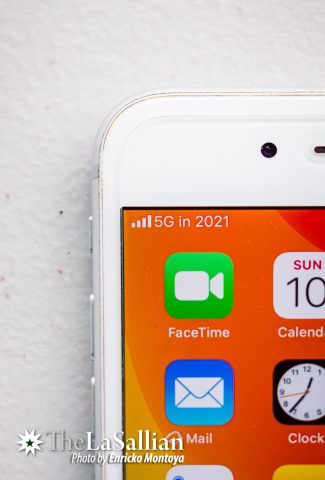
Even with the COVID-19 pandemic, 5G, or the fifth-generation wireless cellular technology, still managed to expand globally. China became the country with the highest 5G subscription penetration, reaching 11 percent of its mobile subscription base, as stated in the November 2020 Ericsson Mobility Report.
Telecommunication service providers (TSPs) and consumer electronics companies around the world have started pouring resources into making 5G more accessible—building and upgrading cell sites and decreasing the prices of 5G smartphones. If 5G maintains its steady growth, Ericsson predicts that in 2026, 60 percent of the world’s population will have access to 5G. But what is this relatively new technology, exactly? What does it mean for a world reliant on connectivity, especially during the pandemic?
A whole new spectrum
5G is the newest generation of mobile network technology, with connection speeds 10 times faster than the previous one, Long-Term Evolution (LTE), otherwise known as 4G. According to Samsung, 5G’s latency or lag is reduced by 5,000 percent, making it possible for real-time interaction between technologies that are thousands of miles away.
Most devices like new smartphones already support 5G, but 5G can cater to more than just smartphones, opening new possibilities for different technologies such as artificial intelligence, autonomous vehicles, and cloud-based applications. Although, TSPs have to expand 5G coverage before these devices can use it.
Small radio frequency base stations called small cells provide bandwidth required to power 5G in the millimeter wave (mmWave)—a fast frequency but also one that is unable to travel very far and is prone to blockage by objects in the environment. But as of the moment, most 5G frequencies only operate on the low-band and mid-band spectrum because lots of small cells are still needed to blanket an area in order for devices to make use of the mmWave. In the Philippines, TSPs like Globe and Smart have already converted hundreds of their sites to utilize 5G, but they do face certain roadblocks. Computer Technology associate professor Dr. Marnel Peradilla shares, “There is too much bureaucracy to secure building permits. The government [is] already exerting efforts to fast-track these applications. The government must work hand-in-hand with the telcos.”
What’s in store for us?
According to the Electronic Connections Network, a good example of an industry that would benefit from 5G would be the healthcare industry. Its presence could provide people living in remote areas access to life-saving services through their mobile phones as well as remote training for medical professionals through virtual and augmented reality. Dr. Peradilla also highlights the internet of things and smart cities stating that the proliferation of the 5G will help these achieve their goals.
Similar to TSPs from other parts of the world, companies like Globe and PLDT have also expressed their intentions to get a hold of these technologies as soon as possible. According to a Facebook post by CNN Philippines, DITO Telecommunity Spokesperson Atty. Adel Tamano averred that the plans regarding the implementation of 5G would see an 84 percent coverage of the country in five years’ time.
Given how reliant Filipinos are on the internet, Peradilla argues, “The consumers are the winners here if the expansion project will succeed.” Smart President, CEO, and PLDT Chief Revenue Officer Alfredo S. Panlilio has promised many advancements to the mobile data experience—especially when it comes to streaming. “From a video consumption point of view, I think it will make the experience much better,” Panlilio said in an article by Smart Communications.
He also claimed that aside from benefiting mobile data users, 5G will enhance the currently existing products that companies like PLDT offer such as pocket wifi, fixed wireless routers, and fiber-optic communication. “We believe that 5G will improve mobile internet capacity and experience, and we are also developing a lot of use cases,” he said.
For the meantime, however, based on projections from the Ericsson report, LTE will likely keep its spot as the dominant mobile access technology by subscription until 2026 due to its speed and availability. During the third quarter 2020, LTE subscriptions increased by around 70 million, reaching to a total of approximately 4.5 billion users. Projections, however, show that it will reach its peak in 2021, then slowly lose subscribers to 5G data plans.
With more 5G units being installed all over the world, 2021 could possibly be the year where we observe a much more noticeable improvement with the development and consumption of the technology. Even if it would not be fully realized around this time, we can assume that improvements will be seen in the system, which can greatly affect various industries. If all goes well with the implementation of 5G in the country, the future of the internet here looks like a rather bright one.
